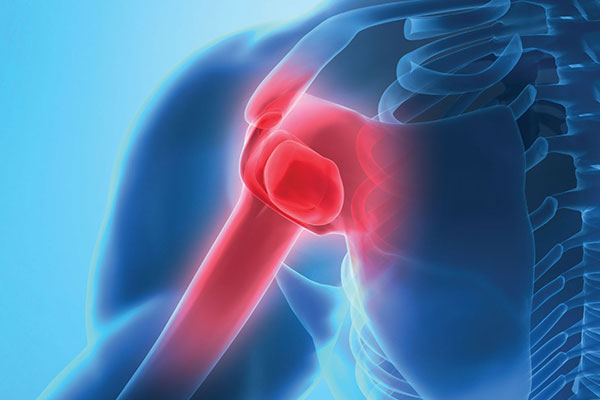
Sometimes, replacing a severely injured or deteriorating human joint is easier to perform and more effective for patients when orthopedic surgeons reorganize, re-arrange and tinker with the body’s original anatomy.
Case in point: reverse shoulder replacement surgery is now being used more frequently by specialized shoulder surgeons for patients who previously had to undergo a more complicated traditional joint replacement procedure or opt for no treatment at all.
“The ability to do reverse shoulder replacements has helped us treat complex shoulder fractures, advanced arthritis and irreparable rotator cuff tears that we couldn’t address previously,” says Dr. Brian Hill, a board-certified shoulder and elbow surgeon at Palm Beach Orthopaedic Institute who performs surgery at Jupiter Medical Center.
Because the shoulder is one of the body’s most flexible joints, it’s also one of the most complex to repair if it’s injured, fractured or broken, explains Dr. Hill. Traditional replacement surgery replicates what Mother Nature designed: replacing the shoulder’s ball joint with an artificial ball joint and the shoulder socket with an artificial socket. But that procedure, Dr. Hill points out, requires normal anatomy such as an intact rotator cuff to hold the shoulder bones in place.
“With the reverse procedure, we place the ball where the socket used to be and the socket where the ball used to be, with improved coatings on the replacement components for smoother motion and longevity,” he explains. “This new approach maintains the shoulder’s fulcrum, and with other muscles of the shoulder, holds the replacement in place.
“The shoulder’s a little more constrained, but when the patient lifts the arm, the shoulder joint rotates easily around the new ball in the new socket,” he adds. “For shoulder injuries or arthritis, the joint can stay in place longer and better.”
Based on recent data, full recovery from surgery still takes from five months to a year, “but with the reverse shoulder placement, you don’t have to protect the rotator cuff muscles as much and patients are out of the sling sooner.” Most patients experience positive results, including less pain and increased range of motion in a new joint that will last 10 years or longer.
“A breakthrough for many problems”
First introduced about 20 years ago, this reverse approach to shoulder replacement is an option for patients who have a deficient or non- working rotator cuff muscle, and for patients experiencing:
- Irreparable rotator cuffs tears
- Failed previous shoulder surgery
- Excessive wear of the shoulder socket
- Complex shoulder fractures, meaning the upper arm bone cannot be repaired or re-fitted effectively into a new shoulder
“With both types of shoulder replacement, patients are returning to sports that weren’t possible before,” Dr. Hill points out with satisfactory pride. “Tennis players are back to tennis, swimmers are getting back in the pool, golfers are getting back on the course, and overhead athletes can potentially get back to their favorite sports.
“The reason I got into the shoulder and elbow specialty is because there are so many new advancements happening at the same time,” he says. “We know so little with shoulders that over the next 10-20 years, this specialty could look completely different. It’s so exciting to see what’s happening.”
AUTHOR: Brian W. Hill, M.D. is a board-certified shoulder surgeon at Palm Beach Orthopedic Institute. He is an expert in advanced reconstructive and arthroscopic techniques, and serves as an assistant team physician for the Washington Nationals and their affiliates. Dr. Hill treats shoulder injuries and arthritis with a focus on patient-centered care and clear communication.






